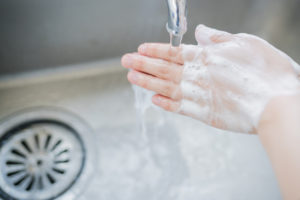
Water usage is becoming a larger concern among municipalities and mandated conservation efforts are becoming a larger conversation in many areas of the country, especially in states expected to be affected by water shortages and drought conditions in the coming years.
If your organization is participating in water conservation efforts—either due to a municipal/state mandate or in an effort foster an eco-conscious culture—your organization is likely devising a strategy to reduce overall water usage.
What’s one of the key spots where your organization can cut back? Your bathrooms.
Transitioning to a touchless bathroom, in which automated dispensers and faucets distribute product and water without a user having to touch anything, not only decreases product and water usage, but also reduces costs associated with cleaning/maintaining bathroom areas, and can even reduce customer complaints.
Installing automated appliances can help decrease water and product usage and related costs by up to 50 percent. There are plenty of areas within your organization’s bathroom facilities that can be targeted for water and cost saving potential.
Automated foam soap dispensers
Foam Soap is an important change for two reasons;
- The soap is mixed with air as it is dispensed to produce a foamed product, reducing the amount of soap dispensed by up to 50%.
- Since the soap is already foamed when dispensed, there is less water required to create lather.
In addition to converting to foam soap, further savings are achieved by the use of automated dispensers. By switching over to automated foam soap dispensers, which are set on a sensor, the amount of product that is dispensed can be reduced.
The final savings can be achieved through a reduction in the frequency required to replenish liquid soap by the custodial staff.
Sink fixtures
Another cost-effective way to conserve water is to install automated faucets. Water-saving faucets can be retrofitted with an existing sink and plumbing without having to replace the entire bowl. Automated sink fixtures are activated by sensor and can be adjusted, which can reduce water usage by as much as 50 percent. This type of fixture also decreases the chance that a faucet is left running inadvertently, which contributes to excess water usage.
Paper towel dispensers
While it doesn’t directly conserve water, swapping out manual paper towel dispensers for sensor-activated units can reduce both the amount of product used and trash produced (and time required for cleaning). Many sensor-activated units are battery operated, which can result in battery replacement and disposal costs. However, alternative touchless dispenser models allow a user to pull down a single-use towel (eliminating the need to touch a lever or handle) and conserves product usage.
Hand dryers
Air hand dryers are another option that would eliminate paper towel usage and product purchasing. A caveat is that some air dryers blow excess water onto the floor, creating puddles that need to be cleaned up. Installing a collection mat or a small floor drain in proximity to the hand dryer areas can usually reduce the amount of water that collects on the floor.
Toilets
Urinals can be converted to an automatic flush by installing a flush valve that controls the urinal’s flush mechanism. Flush valves, which can be set by facility maintenance via key control, can help keep bathroom odor at bay and can result in up to 70 percent savings on water-related costs. Low-flow toilets are another option that can provide both water and cost savings.
Whether your organization decides to make small changes (such as swapping out paper towel and soap dispensers) or to make sweeping changes (such as a complete renovation), transitioning to a touchless bathroom is an effective way to reduce your organization’s water usage and overall bathroom maintenance costs. Even minor changes can produce significant results.